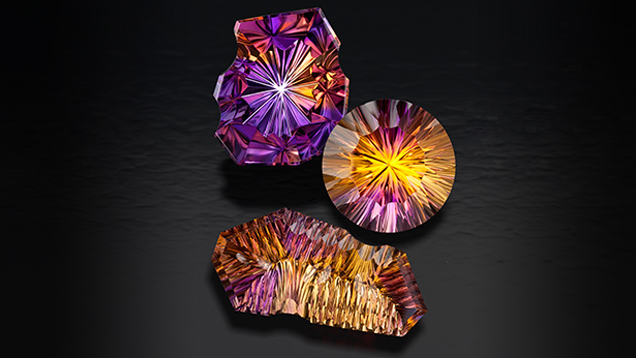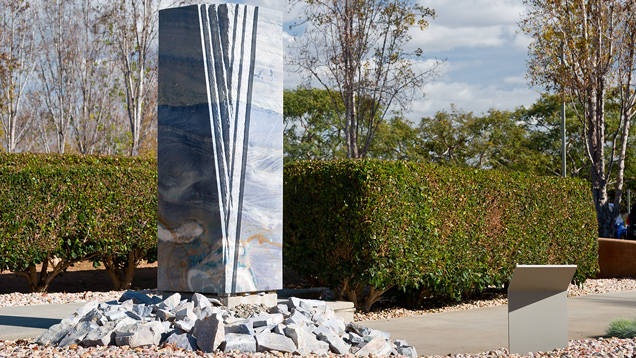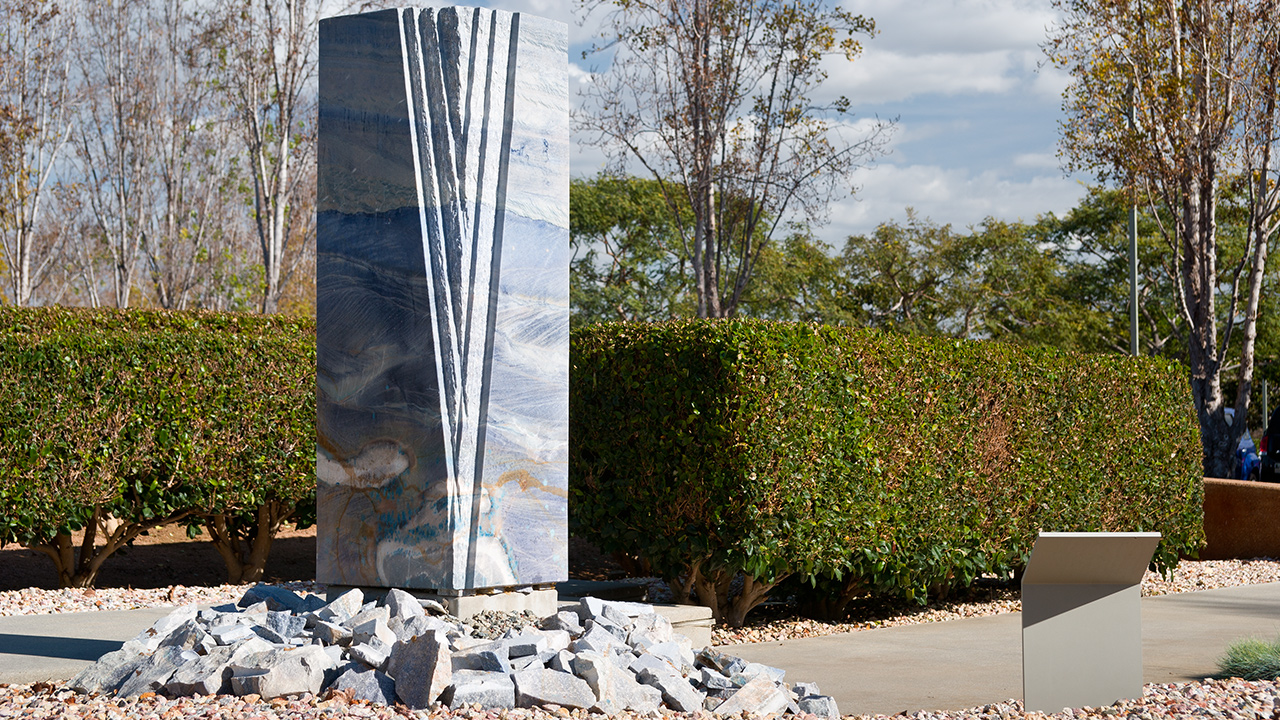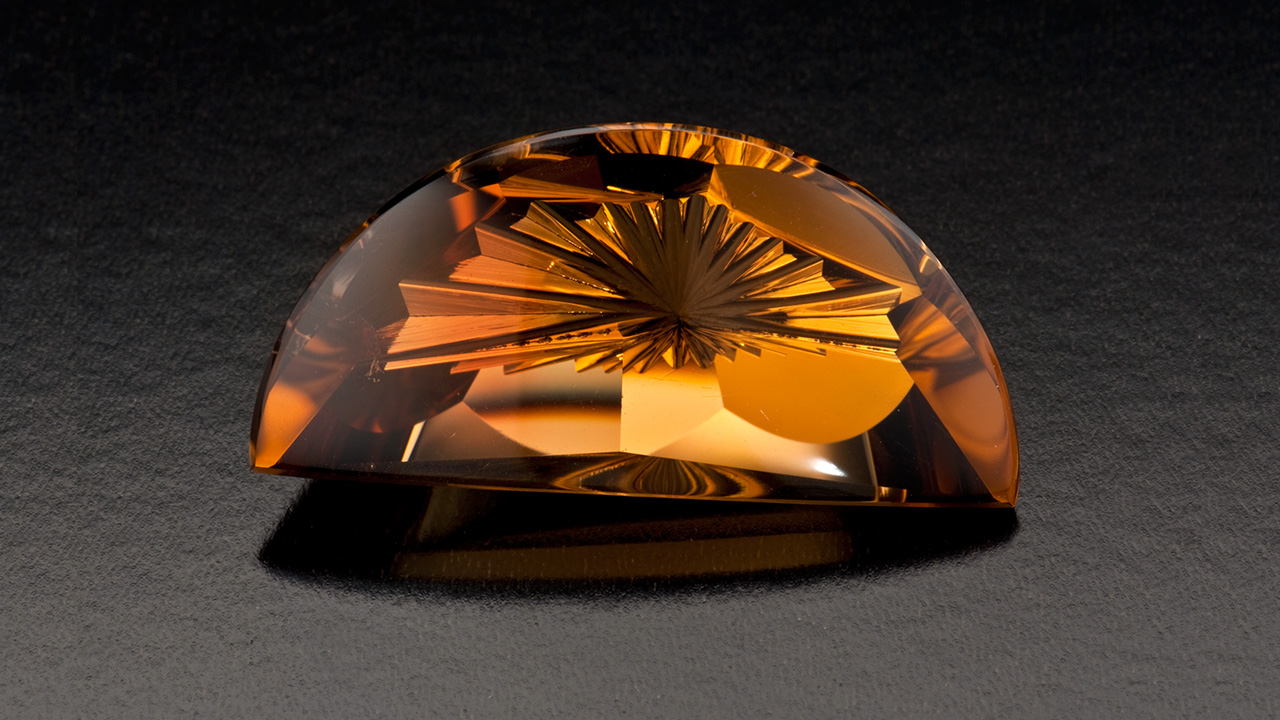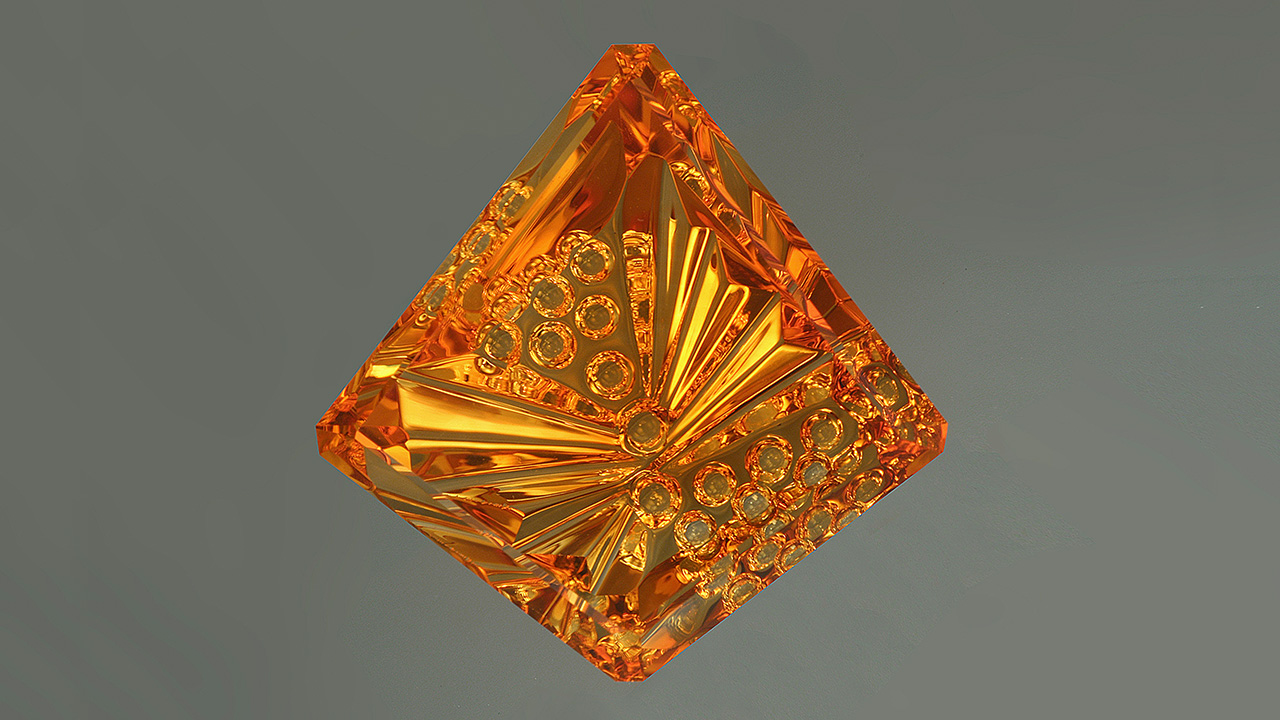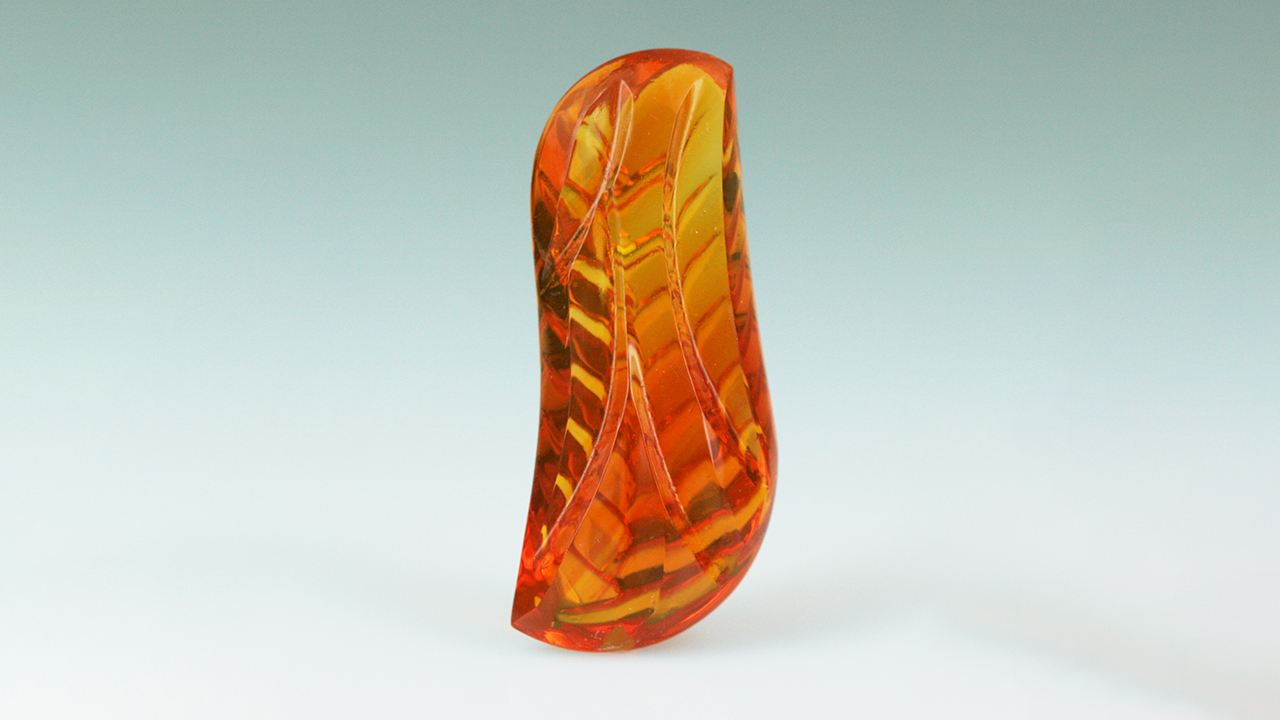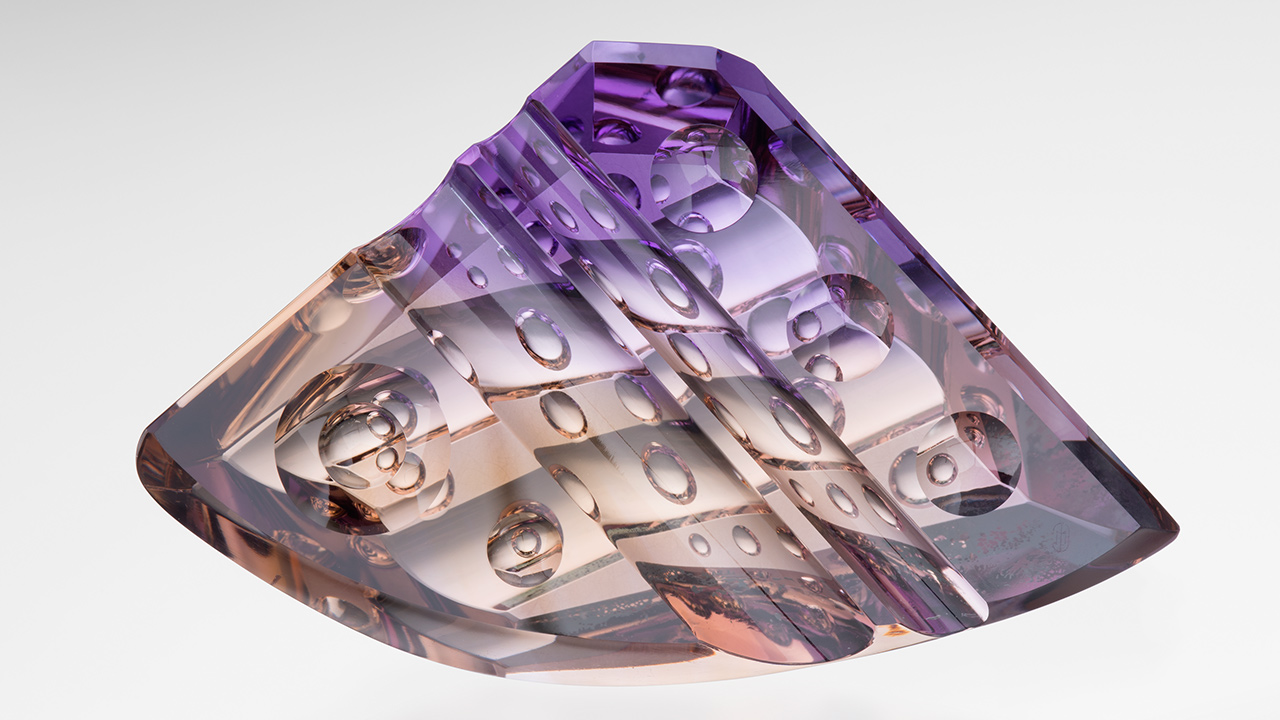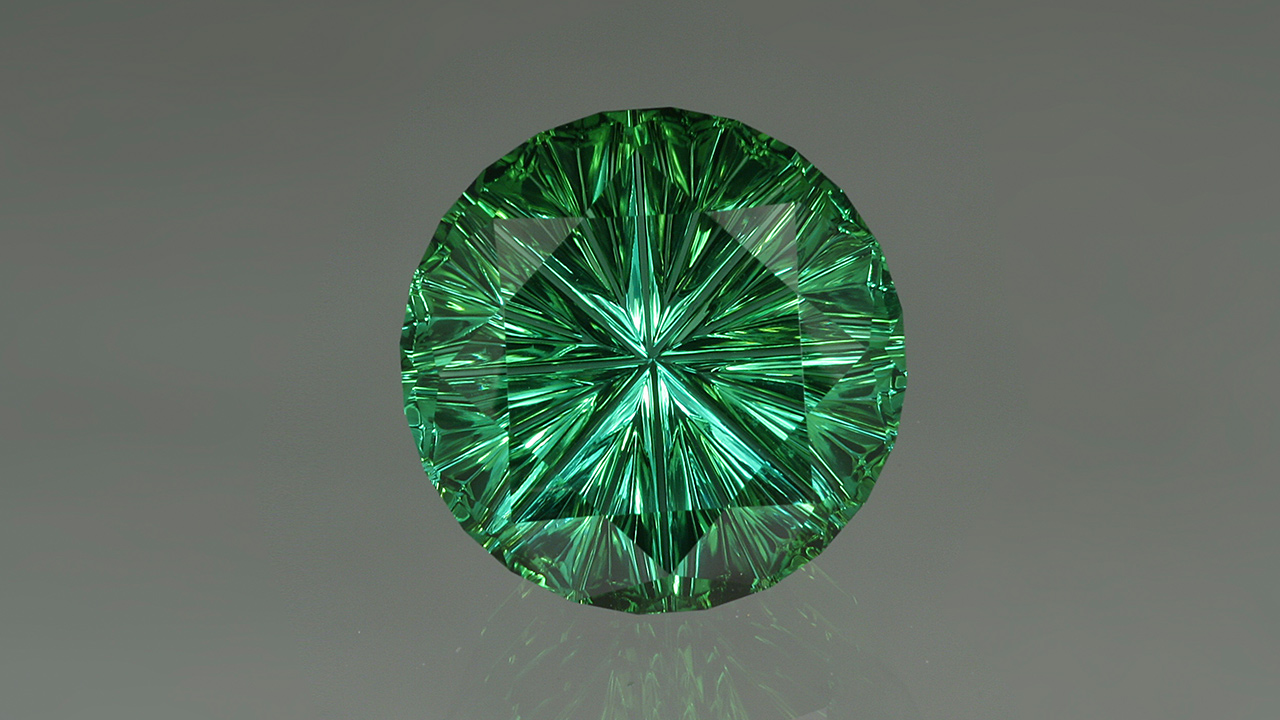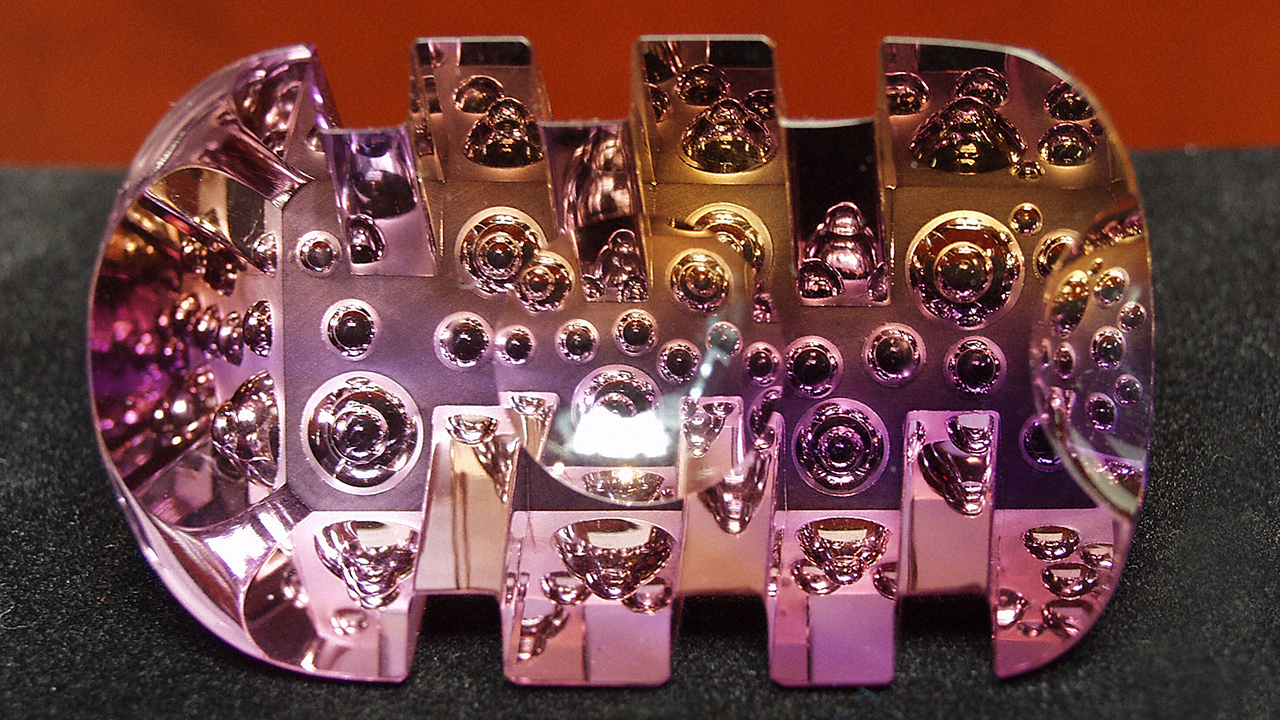And Then Came the Fantasy Cut
September 29, 2014
Once upon a time, gem cutting was a strict craft bound by centuries of tradition. The job of a lapidary was to cut a gemstone to ideal proportions while preserving as many carats as possible. Then Bernd Munsteiner (b. 1943) invented the fantasy cut (concave cuts made on the back of gemstones).
Munsteiner freely sliced away carats on the backs of gemstones to create spectacular lightshows on their fronts. The only ideal proportion he acknowledged was the one that freed the natural beauty he saw hiding in the stone.
Many in the gem and jewelry trade didn’t know what to make of the fantasy cut. But the critics eventually became admirers, and Munsteiner’s pieces ended up in galleries and museums.
Munsteiner’s most famous work may be the Dom Pedro – Ondas Maritimas, an exquisite 10,363 ct aquamarine gemstone. It is so breathtaking that the Smithsonian said it is “one of the few objects in the world that can hold its own in a display case just 30 feet from the Hope Diamond.”
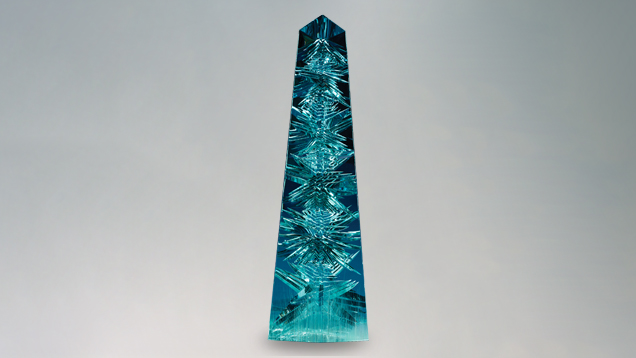
Munsteiner’s innovative work inspired generations of award-winning lapidaries like Richard Homer, Michael Dyber, John Dyer, and Sherris Cottier Shank. The American Gem Trade Association even hosts the prestigious Cutting Edge Awards competitions where lapidaries submit fantasy cut gemstones.
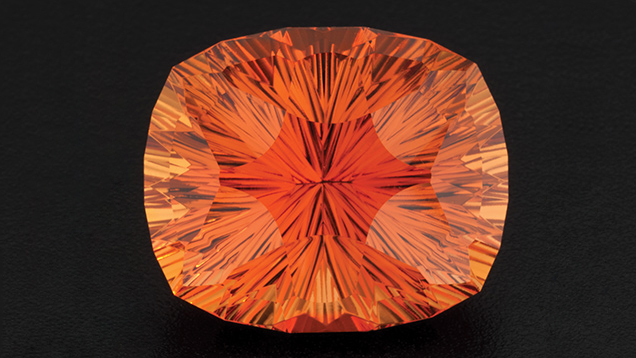
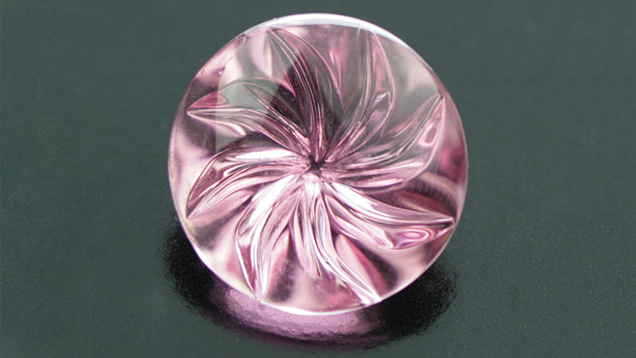
One of the most significant differences between fantasy cuts and traditional cuts are the types of cuts made on gemstones. Traditional gemstones are fashioned by placing them on a faceting machine with a flap lap tool, which grinds away and polishes the stone. Fantasy cut gemstones have grooves, optic dishes, and concave facets – all made possible by the development of tools to cut these design elements into gem materials.
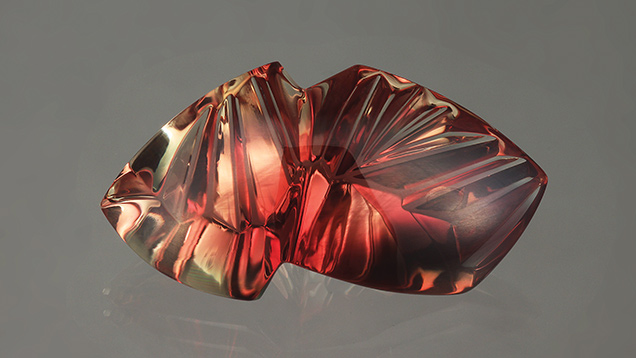
John Dyer & Co.
Size of the gemstone is an important consideration to lapidaries: the larger the gem, the larger the “canvas.” Some cutters use diamonds and the Big Three (rubies, sapphires, and emeralds), but these materials are often difficult to obtain in large sizes. So many cutters chose gemstones that provide larger canvases, like quartz and aquamarine.
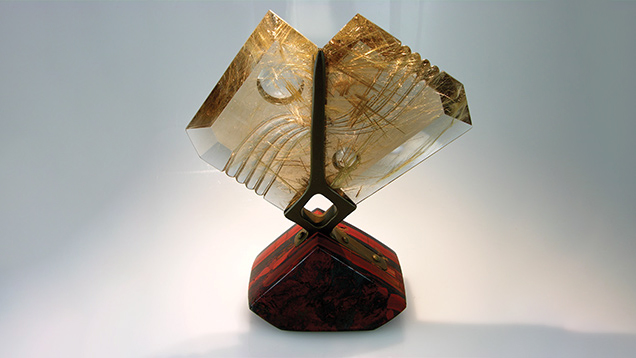
The world of fine jewelry and the fantasy cut may be far apart, yet a profound understanding of gemology is required by the craftspeople in each field. It is this love of gemstones that ultimately unites them.
